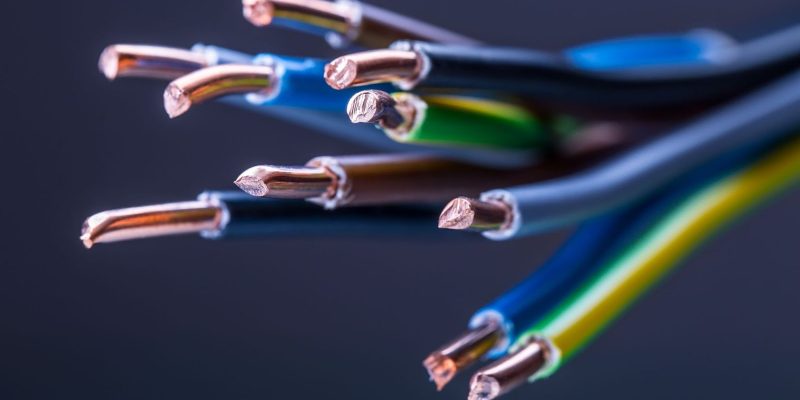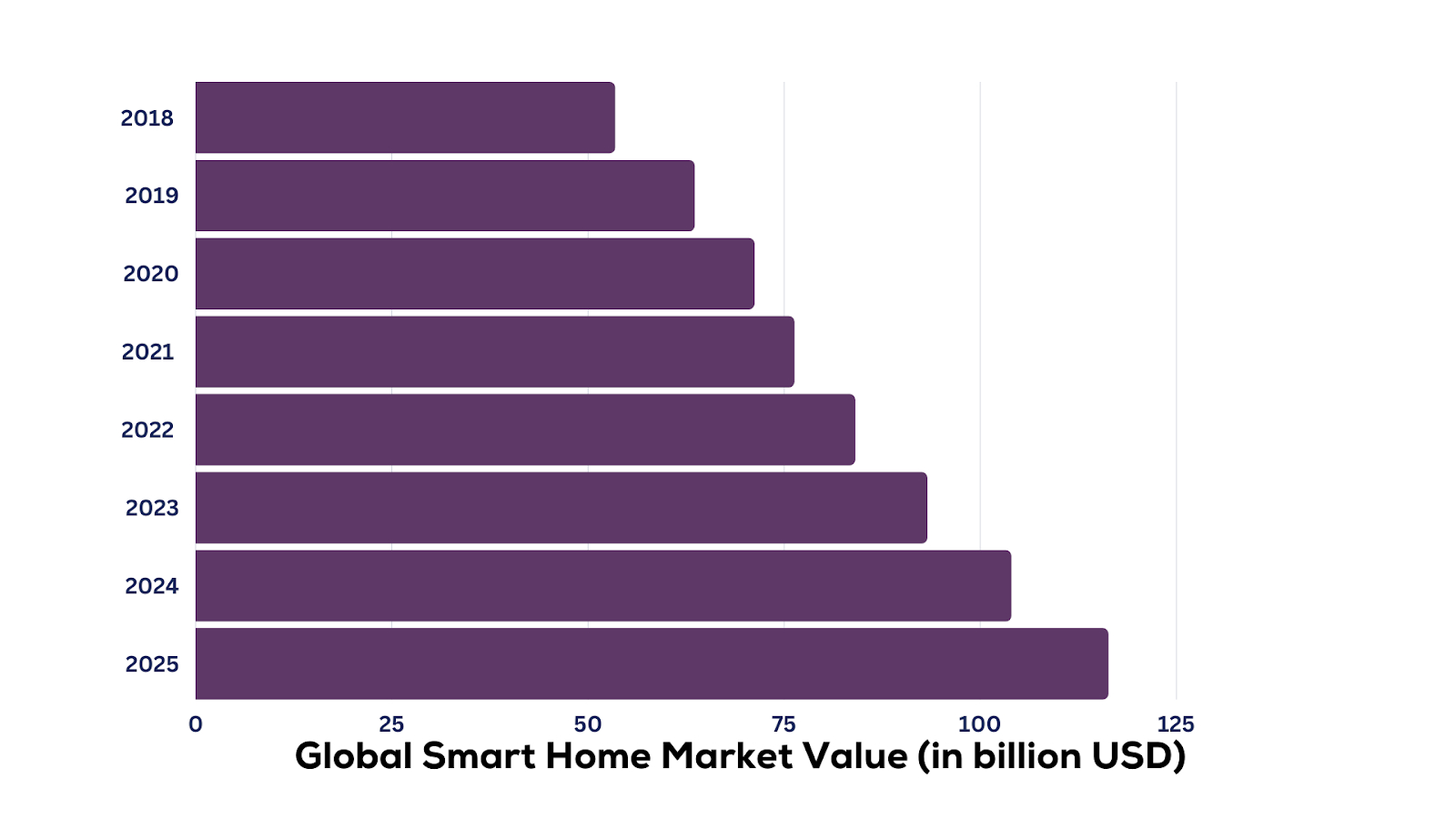The smart home automation landscape has witnessed a meteoric rise, with its market size soaring to a staggering $64.66 billion in 2022. This rapid growth is not just a fleeting trend; projections indicate a robust CAGR of 27.3% from 2023 to 2030.
With such exponential growth, one might wonder about the driving forces behind this evolution. Enter the unsung heroes: low-voltage contractors. Their expertise in integrating smart devices and systems ensures that connectivity translates into convenience for homeowners.
Low voltage contractors handle the installation and maintenance of electrical systems that operate at less than 100V in buildings. This includes things like security cameras, access control systems, home automation, IT cabling, fire alarms, and more.
The low-voltage construction sector has grown in recent years with the advancement of smart home technologies and an increasing focus on security system installation. Commercial spaces also utilize low-voltage systems heavily.
The Role of Low Voltage Contractors in Modern Home Automation
The digital age has ushered in unparalleled connectivity. In January 2022 alone, urban areas in India reported a whopping 336.60 million internet subscribers. But it’s not just about human connectivity; devices are talking too. The IoT landscape boasted around 14.4 billion connected devices in 2022, a number set to nearly double by 2025.
While these numbers are impressive, they’d be mere statistics without the expertise of low-voltage contractors. Their role ensures that these devices don’t just connect but also enhance our daily lives.
The modern homeowner seeks more than just connectivity; they crave convenience and efficiency. Smart home automation, backed by the expertise of low-voltage contractors, offers precisely that – a seamless integration of devices that makes daily tasks a breeze.
Low voltage contractors possess specialized skills like:
- Understanding connectivity protocols like Zigbee, Z-Wave, Bluetooth etc.
- Assessing a home’s infrastructure to determine automation needs.
- Selecting and installing compatible smart devices and hubs.
- Programming and integrating devices into a unified system.
- Troubleshooting connectivity and performance issues.
By leveraging these competencies, they contribute to the proliferation of smart homes, one seamless installation at a time.
The modern homeowner seeks more than just connectivity; they crave convenience and efficiency. Smart home automation, backed by the expertise of low-voltage contractors, offers precisely that – a seamless integration of devices that makes daily tasks a breeze.
By making use of these competencies, they contribute to the growth of smart homes, one smooth installation at a time. Installation of low-voltage wire by yourselves may cause some problems, sometimes danger can occur when a professional is installing. So it is better to consider someone else for the installation of low voltage. There are many low-voltage contractors throughout the U.S. Low-voltage contractor Fort Lauderdale Florida is advancing in home automation through its specialized expertise. They will assist you in your journey to automate your home with low-voltage wires.
Benefits of Smart Home Automation through Low Voltage Systems
A successfully automated home powered by low-voltage systems provides homeowners with:
- Convenience: Control lighting, HVAC, appliances, locks, and more from anywhere.
- Efficiency: Automate daily routines and save time. Smart thermostats and lighting trim energy costs.
- Security: Monitor your home 24/7 via video doorbells and security cameras. Receive mobile alerts for suspicious activity.
- Comfort: Customizable scenes like “movie night” or “dinner party” create the perfect ambience.
Smart manufacturers aim to make automation affordable for a wider audience by pricing products competitively. As a result, cost-conscious homeowners can also enjoy these cutting-edge conveniences.
But as with all technological advancements, there’s a flip side. While the benefits are manifold, the challenges faced by low-voltage contractors are equally daunting.
Specialized Skills Acquired by Low-Voltage Contractors
- Understanding connectivity protocols like Zigbee, Z-Wave, Bluetooth etc.
- Assessing a home’s infrastructure to determine automation needs.
- Selecting and installing compatible smart devices and hubs.
- Programming and integrating devices into a unified system.
- Troubleshooting connectivity and performance issues.
Low Voltage Wiring Safety Considerations
Even if you are installing a low-voltage wire it should be done with proper care. It has many of the same hazards as any other construction trade, so you should not overlook safety considerations. Even professional installers can experience unsettling dangers if working in an unsafe environment.
According to research, even when there are no outward indicators of injury, low-voltage electric shocks can nevertheless result in electrocution and deadly injuries.
When working with low-voltage wiring, safety considerations include:
- Always use insulated tools and avoid all contact with bare terminals and grounded surfaces.
- Check each of the relays, especially near the 120V connections in the lights or other switched devices themselves.
- Follow all safety precautions and guidelines.
Challenges Faced by Low Voltage Contractors
As homes get increasingly smarter, low-voltage contractors must stay ahead of the curve. Key challenges include:
- Integration complexities: With new products constantly entering the market, determining compatibility issues and debugging connections can be tricky. Contractors must test devices thoroughly and have troubleshooting skills to identify and resolve integration problems.
- Training requirements: Contractors must constantly update their skills and earn certifications to install and program new devices correctly. Investing in employee training on the latest protocols and technologies is crucial.
- Security concerns: They must implement network security best practices like firewalls, encryption, and secure connections to prevent hacking of automated systems. Keeping credentials and permissions updated is also important.
- Changing protocols: Keeping up with evolutions in connectivity protocols like Wi-Fi 6, 5G, and new smart home standards requires dedicated research and testing efforts. Falling behind on new protocols can severely limit integration capabilities.
- Future-proofing: Selecting flexible platforms and upgradable devices to accommodate future technological shifts is key. Open-source automation hubs that support third-party integrations are ideal to prevent vendor lock-in.
- Interoperability issues: With hundreds of IoT brands in the market, cross-compatibility can be challenging. Providing support across diverse devices and standards is essential.
- Evolving customer needs: Customers want holistic home automation, from AV to climate to security. Having expertise across domains is a must to deliver complete connected home experiences.
By making strategic employee training investments and leveraging automation testing tools, contractors can overcome these hurdles.
Latest Innovations and Trends
Despite the challenges, low-voltage contractors continue to push the boundaries of home automation. Exciting innovations like the following demonstrate their commitment to wiring the homes of the future:
- WaveFormingTM technology Trinnov Audio enables hundreds of speakers to function as one synchronized system, enveloping homeowners in 3D, multidimensional sound.
- Trident IoT is revolutionizing RF development for smart products through its no-code IoT platform that simplifies wireless prototyping.
- Advanced lighting scenes by Lutron allow homeowners to set the perfect mood lighting atmosphere with the tap of a button. The Caséta wireless system makes installation seamless.
- As innovations like these highlight, low-voltage contractors play an invaluable role in turning disruptive technologies into accessible conveniences for the modern homeowner.
The Future of Smart Home Automation
As the market expands at a breakneck pace, what does the future hold for smart home automation? Here are some projections:
- Ubiquitous voice control: Smart speakers with AI assistants will become commonplace, able to understand contextual commands and even anticipate users’ needs.
- Expanded wireless connectivity: 5G, Wi-Fi 6E, and Thread will enable faster and more reliable device-to-device communication.
- Predictive analytics: Machine learning will allow home automation systems to study user patterns, predict preferences, and make smart automation suggestions.
- Hyper-personalization: Rich user data will enable precise customization down to the individual room and family member based on habits and tastes.
- Multimodal control: Voice, touch, gestures and even thought-based control interfaces will provide users with flexible automation options.
- Enhanced security: Biometrics, blockchain, and advanced cryptography will further secure connected homes from cyber threats.
- Smart appliances: Major home appliances will become smarter and more energy-efficient with embedded connectivity and automation.
- Robotics integration: Robotic vacuum cleaners, lawnmowers and other autonomous devices will seamlessly link with smart home platforms.
Low-voltage contractors will continue playing a critical role in this future by advising clients on cost-effective solutions, seamlessly installing and integrating cutting-edge innovations, and ensuring different systems work cohesively.
Conclusion
Low-voltage wiring can carry enough power to create an electric arc. All it takes is one spark in contact with flammable or combustible liquids, solids, or vapors to create an explosion or start a fire. Anyone working with low-voltage wiring should be cautious and treat low-voltage wiring as if it were higher-powered wiring.
As low-voltage contractors continue to integrate the best of cutting-edge innovations with homeowners’ needs and lifestyles, one thing remains certain – the future of smart home automation looks brighter than ever!
FAQs About Low Voltage Contractors in Home Automation
1. How do low-voltage contractors ensure the security of smart home systems?
They install firewalls, encrypt data, conceal wiring, use secure protocols, and educate clients on best practices.
2. What are the primary considerations when integrating multiple smart devices in a home?
Compatibility, positioning, power and connectivity requirements, user preferences, and the ability to control everything through a unified platform.
3. How do advancements like WaveFormingTM technology enhance the smart home experience?
By enabling lifelike, cinema-quality audio that transforms how homeowners interact with home theaters and sound systems.





















